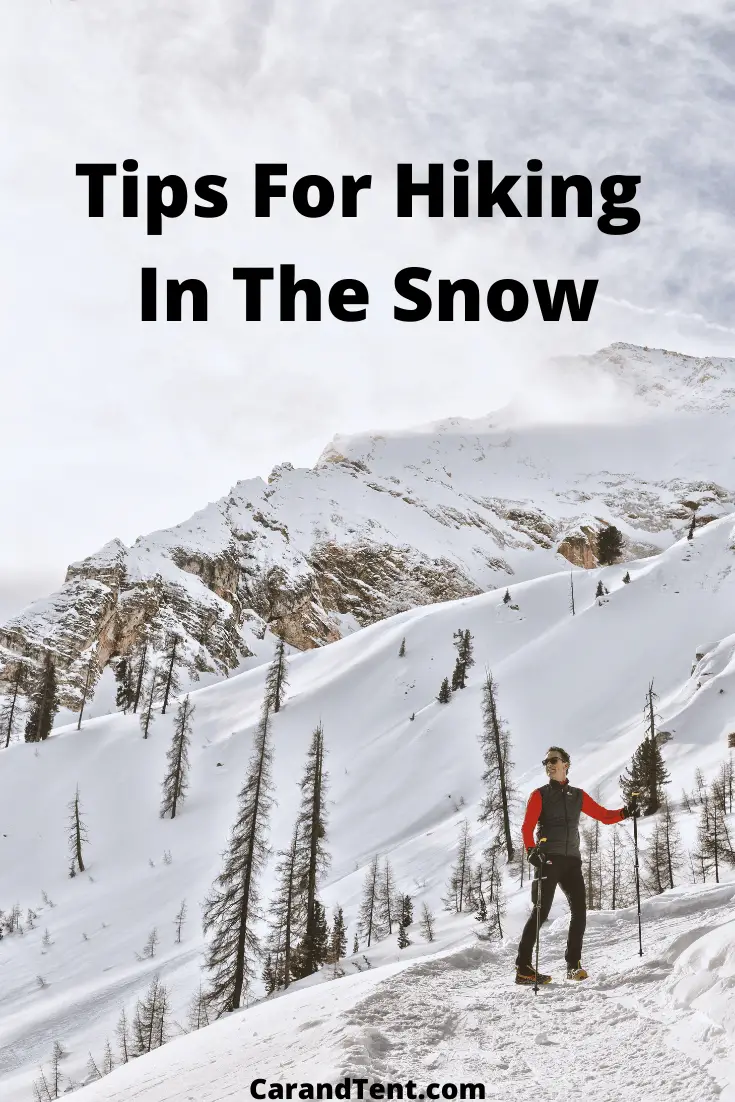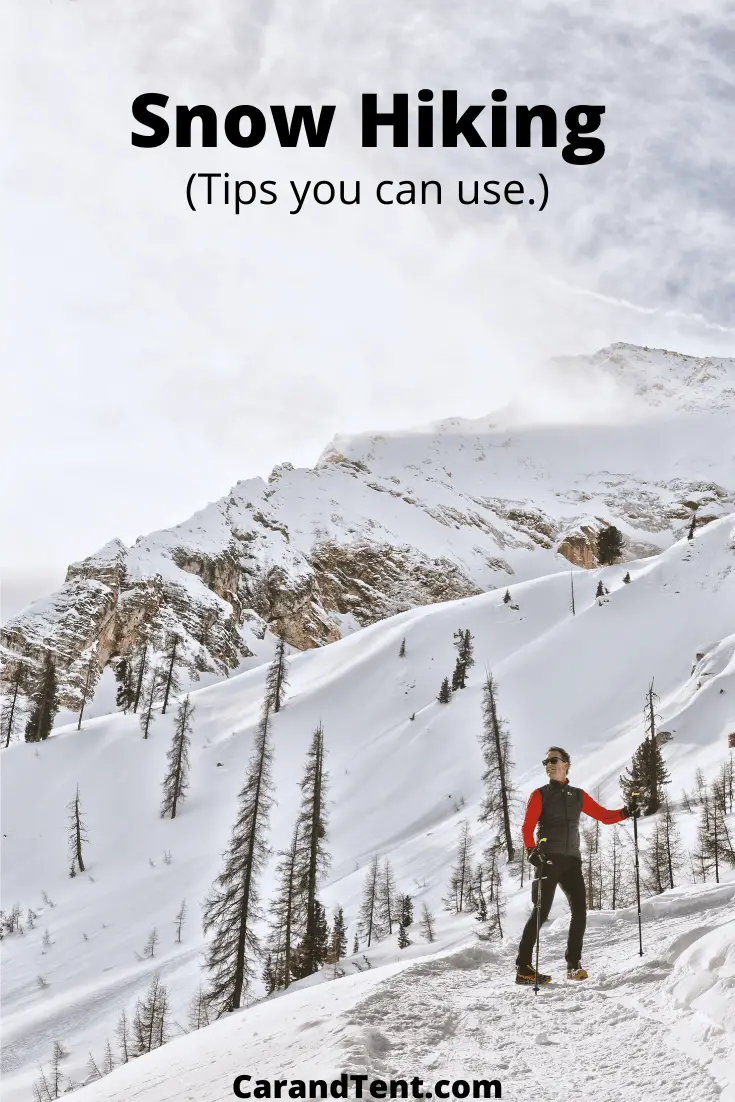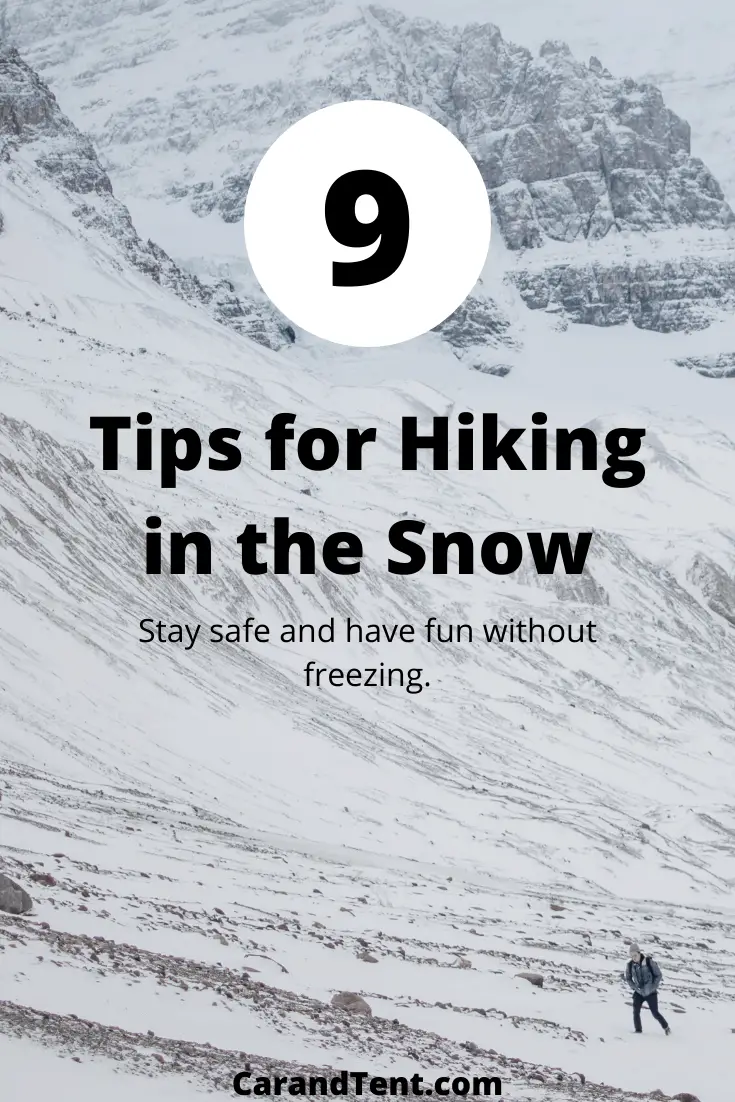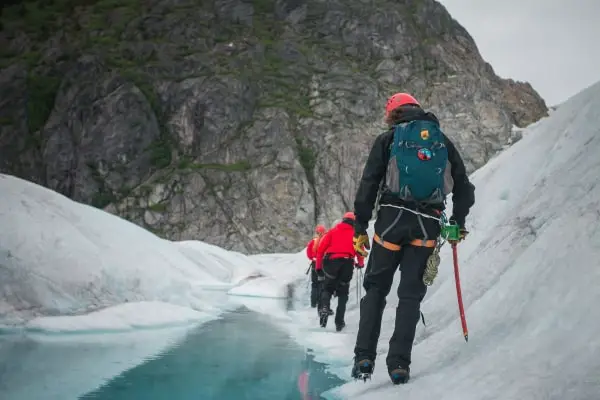
Getting out on the trails in the winter is a wonderful experience. You don’t have to worry about bugs or snakes and the trails are usually a lot less crowded. Of course, the reason for this is that hiking in the snow and ice can sometimes be dangerous and uncomfortable.
So, how do you have fun hiking in the snow while staying safe? In this post, I’ll tell you how to hike in the snow the right way. Here are my top tips.
Table of Contents
Choose Trails That Are Easy to Reach and Easy to Hike
I’ve driven up to many trailheads to find that they were already plowed. However, I’ve also driven up to trailheads to find that nothing had been done yet. This makes perfect sense to me because a trailhead shouldn’t take precedence over a busy street or highway.
For this reason, I always expect that the trailhead won’t be plowed until everything else is. Another expectation I have is that the trailhead might be easy to get into but difficult to leave. What I mean by this is that if it snows a lot while I’m hiking, the trailhead might become inaccessible again. Since the trailhead doesn’t have priority, it might not be plowed again until the next day.
Because of this, I try to park as close to the entrance as possible. This way, if the trailhead’s lot becomes filled with snow, I don’t have to worry about driving through all of it. Also, I try to find trailheads that are extremely close to a well-trafficked road. I do this for two reasons. Firstly, I know it is more likely to be navigatable and secondly, I know that if I get stuck I have a better chance of getting help.
You may be thinking that you don’t like to hike on trails that are easy to get to. These trails are usually full of people and parking can be hard to find. Trust me, you won’t have this problem in the winter. In fact, the trails might be so desolate that you find yourself kind of wishing there were more people there.
The trails themselves should also be easy to hike. Remember, hiking in the snow is going to be much more difficult than hiking in fair weather so even an easy hike can become a difficult one in the snow. Choose trails that do not have a lot of elevation and that do not require any scrambling. If the snow is bad enough you’ll be scrambling anyway as you climb over fallen trees and navigate icy pathways.
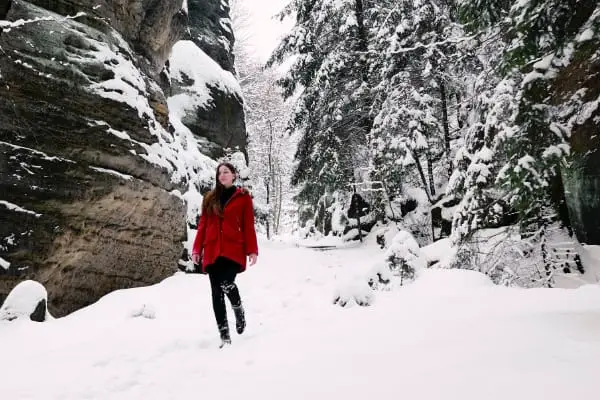
Go Early and Don’t Stay Late
Hiking in the snow in most areas of the country generally means hiking in the winter. In the winter you just don’t have as many hours of daylight to work with.
Also, the consequences for failing to get back before dark are higher when snow hiking. In the dark you won’t be able to spot the fallen trees or the ice patches that you might be able to see in the daylight. It will also get much colder when the sun sets so you’ll have that to contend with as well.
My best advice is to avoid all of this by planning to hike early in the morning. The weather will get nicer as the day passes and you’ll be done your hike before lunch. When it’s done, you may even be able to sneak in another cup of hot coffee without ruining your sleeping patterns.
Pack Sunglasses or Goggles
When you’re hiking or doing anything out in the snow, you run the risk of snow blindness. Snow blindness is a condition caused by too much UV light and it can cause pain in your eyes, a headache, blurred vision or even a temporary loss in vision.
You’re more likely to develop this condition in the snow for a multitude of reasons. One of these reasons is that the snow reflects light. Another reason is that cold temperatures can dry your eyes out which makes you more likely to develop snow blindness. On top of this, being at a high altitude can also make your eyes more susceptible to snow blindness. When you go hiking in the snow, you’re likely to have all of these factors moving against you.
To avoid snow blindness, pack a pair of sunglasses or snow goggles. Sunglasses will most likely be fine as long as you do not have a face mask. However, if it is cold and you’re wearing a face mask, you may want to wear goggles instead. Goggles will keep the lenses away from your warm breath and will reduce the chances of your goggles fogging up as you walk.
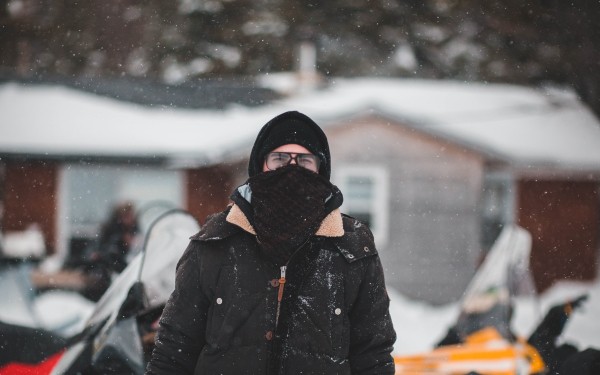
Dress in Layers That Are Easy to Take Off
We all know that dressing in layers provides better insulation and helps to keep people warmer than when they’re dressed in fewer layers. This is a great benefit that you can use to your advantage while hiking in the snow.
However, the more important benefit of dressing in layers when you’re hiking in the snow is that you can take layers off. Hiking in the snow is tough and you may find very quickly that you overdressed for your hike.
I’ve often walked to my car shivering while wondering if I should wear more layers, only to find that 15 minutes into my hike I’m already starting to sweat. Being able to strip off layers will give you the ability to continue your hike without having to worry about sweating too much.
Remember, you want to be warm but you don’t want to sweat as this sweat will only cause you to be cold later on in your hike. It is always better to be slightly too cold than slightly too warm while hiking in the winter.
Wear Gaiters
Gaiters can help protect your feet and legs from getting wet while hiking through the snow. This is critical as wet feet can quickly become frostbitten. A good pair of gaiters will also keep the top of your pants from getting wet as well.
If you mostly hike in warm weather you might not feel it is worth the money to buy another piece of hiking gear. This being said, gaiters do not cost much, they do not take up much space, and they can even be used when hiking in warmer weather as well.
A sturdy pair of gaiters can be used in the summer when you’re hiking through tick or poison ivy infested trails. They provide an additional layer of protection between you and anything in nature that might harm your legs and feet.
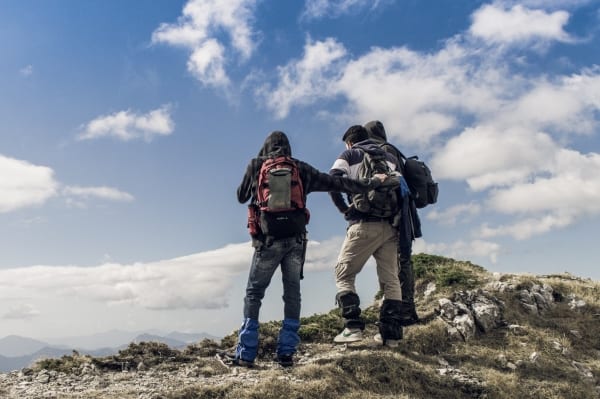
Bring Along Hand and Foot Warmers
Unless I’m standing still or in an incredibly cold area, I don’t like to use hand warmers and I never use foot warmers. This being said, I always pack some with me when I go winter hiking. Reason being, if I step into a deep puddle of water, foot warmers might save me from getting frostbite. A pair of foot warmers can help dry and warm your feet when you need them the most.
Hand warmers can provide the same kind of protection for your hands and they’re especially useful should you get your gloves wet. When storing hand and foot warmers, just keep in mind that they do have an expiration date on them and that old hand warmers may not work as well if at all.
Consider Traction Aids and Trekking Poles
I’ve been on winter waterfall hikes where signs were posted stating that it was not safe to hike without crampons and an ice ax. There were other hiking trails that did not have those signs but they sure needed them. An icy hiking trail can quickly become a deadly hiking trail so consider bringing along traction aids like crampons and trekking poles.
If you get to your hiking destination and you don’t need them, you can leave them in your backpack. On the other hand, if you get to your hiking destination and you don’t have them, you’ll be forced to leave before you even get a chance to hike.
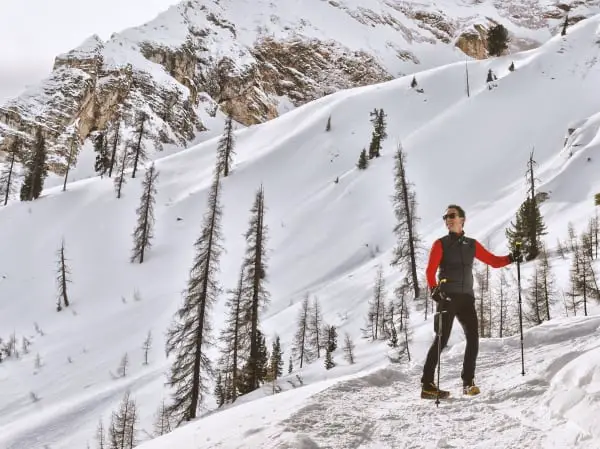
Bring Food and Water
Just being out in cold weather speeds up a person’s metabolism. Hiking in cold weather speeds up a person’s metabolism even more. Bring food with you to snack on and make sure you have some water to wash it down with.
According to the Performance Health Center, the human body’s thirst response goes down by 40% even when a person is dehydrated. This means you should be drinking water to stay hydrated even when you don’t feel like you need it.
Consider Snowshoeing
Are you planning to go for a hike in over 6 inches of snow? If so, you might want to consider snowshoeing. Snowshoeing is more difficult than hiking and it burns more calories too.
Additionally, a good pair of snowshoes will allow you to hike through deep snow that you wouldn’t otherwise be able to hike through. Take a look at our articles on snowshoeing for more details.

